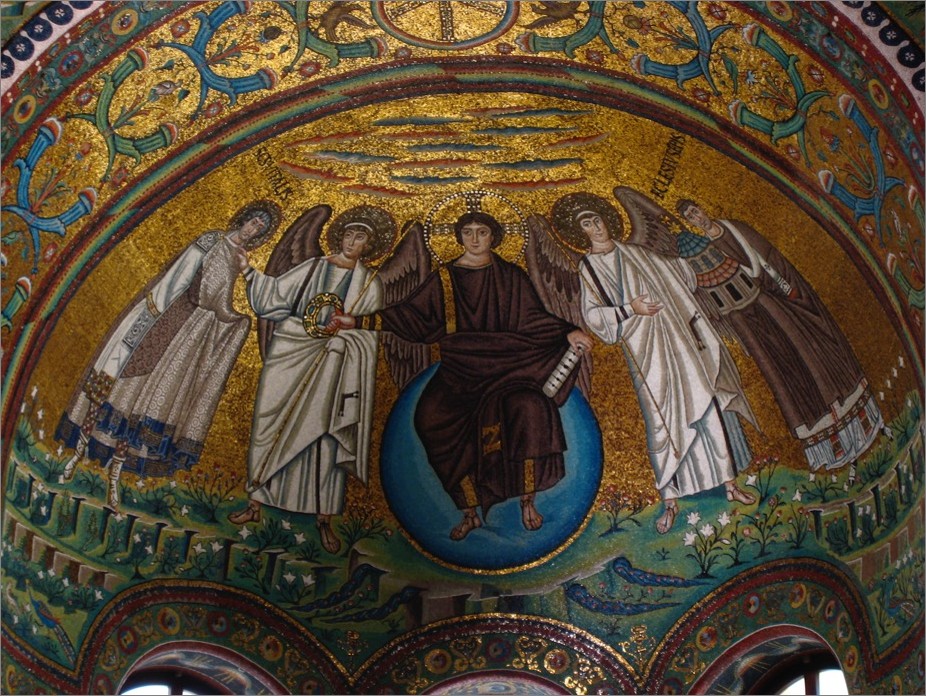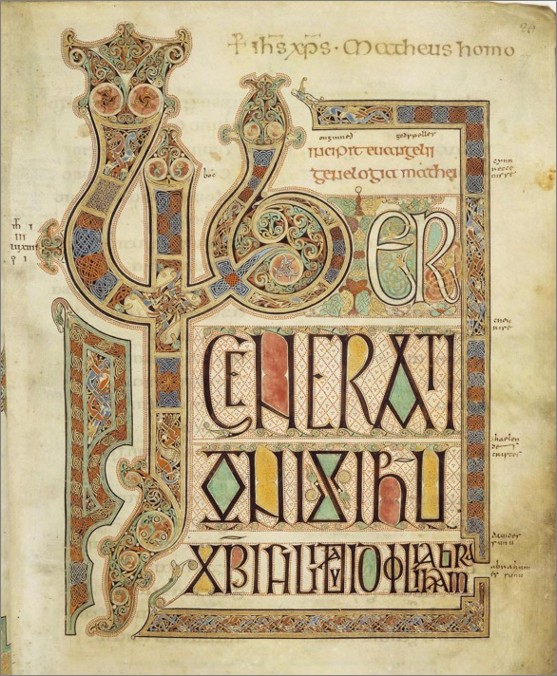基督教与中世纪
公元 1 世纪,基督教在犹太地区兴起并迅速扩散,虽在 2 – 3 世纪遭受迫害,但在 313 年由罗马皇帝君士坦丁大帝(Constantine the Great)与李锡尼(Licinius)共同颁布《米兰敕令》(Edict of Milan)获合法地位,380 年更被定为国教。
君士坦丁在内战中统一帝国并于拜占庭建立君士坦丁堡(Constantinople),成为东罗马帝国的首都,也奠定了拜占庭帝国(Byzantine Empire)的基础,使之在此后千余年成为以希腊文化与基督信仰为核心的东地中海强国。
古典主义(Classicism)崩塌与天主教(Catholicism)兴起:=> from hero to sinner:古典英雄崇拜逐渐让位于基督教围绕罪,救赎与谦卑的世界观。
基督教礼拜文本:=>《圣经》(the Bible)
=> 基督生平:《四福音书》(Book of the Gospels),由门徒玛窦(Matthew),若望(John),马尔谷(Marco)与保禄(Paul)写就。
=> 圣徒(saints)事迹:《使徒行传》(Acts of the Apostles)
=> 创世(Creation):「起初,神创造天地。」
=> 圣母领报(Annunciation):「天使对她说:马利亚,不要怕!你在神面前已经蒙恩了。你要怀孕生子,可以给他起名叫耶稣。」
=> 受难(Crucifixion):「到了一个地方,名叫髑髅地,就在那里把耶稣钉在十字架上。」
=> 天启(Apocalypse):「看哪,他驾云降临!众目要看见他。」
(New Testament, Mark 14:22-24): And as they did eat, Jesus took bread, and blessed, and brake it, and gave to them, and said, Take, eat: this is my body. And he took the cup, and when he had given thanks, he gave it to them: and they all drank of it. And he said unto them, This is my blood of the new testament, which is shed for many.
=> 仪式艺术(ritual art):圣体(Sacramental bread)与圣血(Sacramental wine)
=> 教堂形式(church form):罗马风的长方廊柱大厅(Basilica)演变成基督教教堂。圣母大殿(Santa Maria Maggiore)的后殿(apse)是摆放祭坛与圣像的神圣中心,这与马克森提乌斯和君士坦丁大会堂中康斯坦丁像的位置一致。
东欧的拜占庭艺术
抽象与神圣(abstraction and the divine)(Old Testament, Exodus 20:4-5):
Thou shalt not make unto thee any graven image, or any likeness of any thing that is in heaven above , or that is in the earth below, or that is in the water under the earth: Thou shalt not bow down thyself to them, nor serve them: for I the Lord thy God am a jealous God …
以圣维塔堂(San Vitale)为例:
=> 后殿(apse)殿顶,庄严基督(Christ in majesty)。

=> 圣所(sanctuary)墙面,亚伯拉罕迎接三天使(Abraham receiving three angels)与亚伯拉罕献祭以撒(Abraham sacrificing Isaac)。
=> 后殿内部墙面,《查士丁尼的宫廷》(Court of Justinian)与《西奥多拉的宫廷》(Court of Theodora)。
西欧的早期中世纪艺术
修道院(monastery)艺术:=>《林迪斯法恩四福音书》(The Lindisfarne Gospels),在英格兰北部一修道院中发现。
(Topography of Ireland, of c.1185, Gerald of Wales): Look more keenly at it and you will penetrate to the very shrine of art. You will make out intricacies so delicate and so subtle, so full of knots and links, that you might say that all this were the work of an angel, and not of a man.

=>《耶稣是善牧》(Christ as the Good Shepherd),普里西拉地下木屑中的湿壁画。
本节名录
- the Bible: the holy book of Christianity, comprised of the Old Testament (recounting the history of the world before the time of Christ) and the New Testament (recounting events from Christ’s life and the end of the world in the future)
- 313 A.D.: the Roman emperor Constantine makes Christianity legal
- 330 A.D.: Constantine moves the Roman capital to Byzantium, which later becomes Constantinople (now called Istanbul) and remains the capital of the Byzantine (or Eastern Roman) empire until 1453
- mosaic: a technique for decorating walls, floors, or ceilings using bits of colored stone, ceramic tile (瓷砖), or glass fixed in place with cement (水泥)
- tempera (蛋彩画): paint made by mixing pigments with water and egg. Most illuminated manuscripts were made using ink and tempera on parchment (羊皮纸) or vellum (牛皮纸)